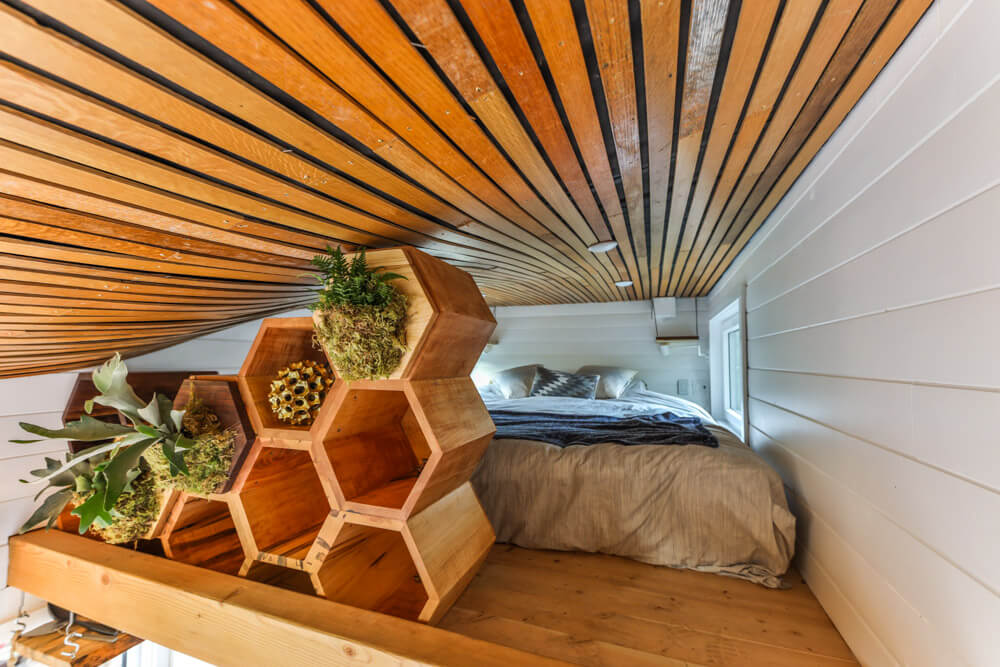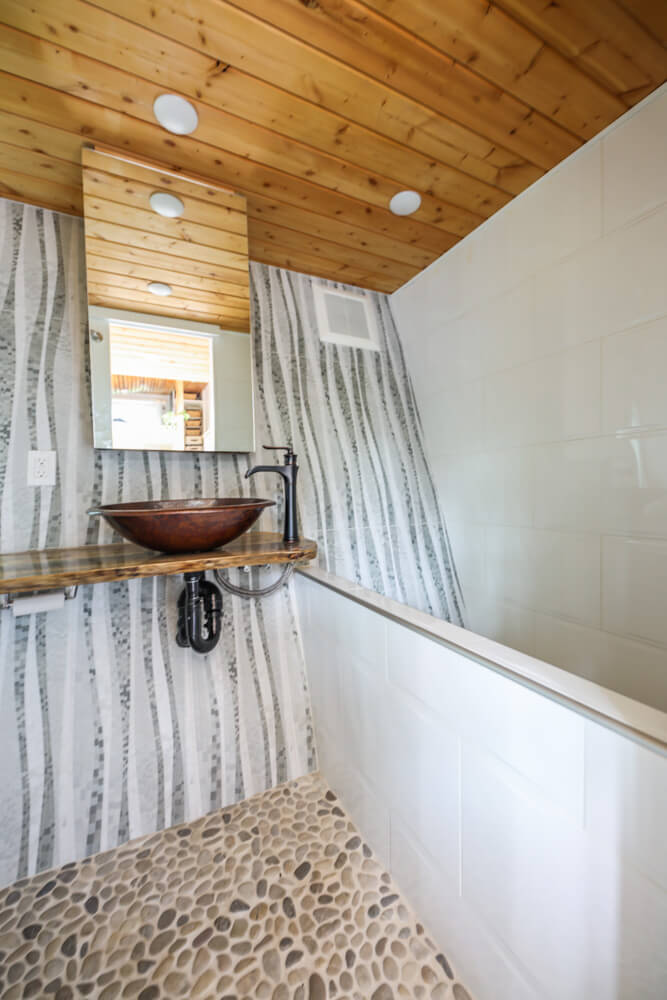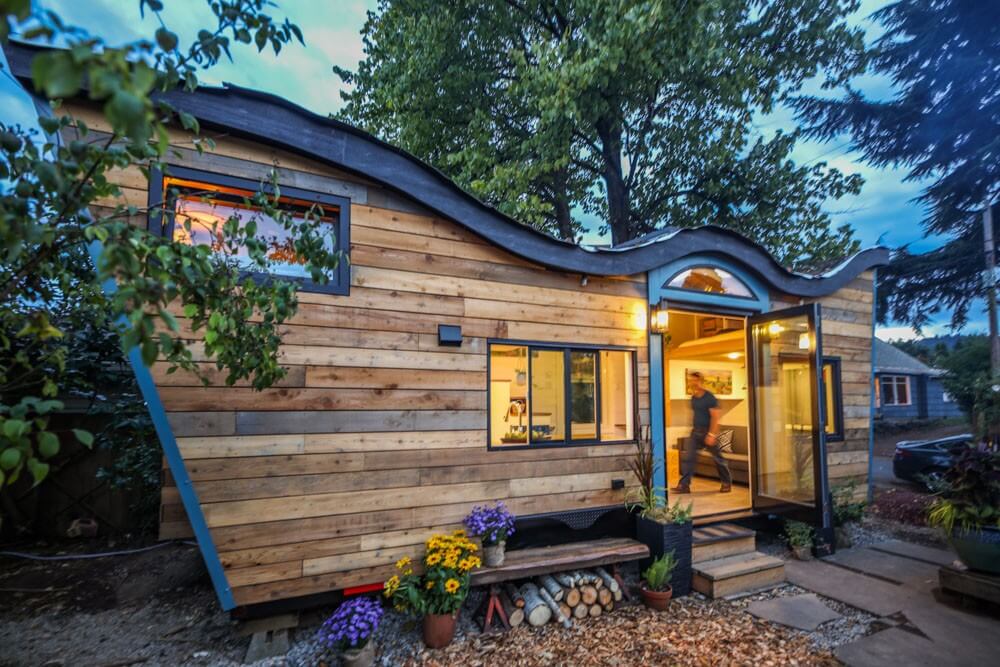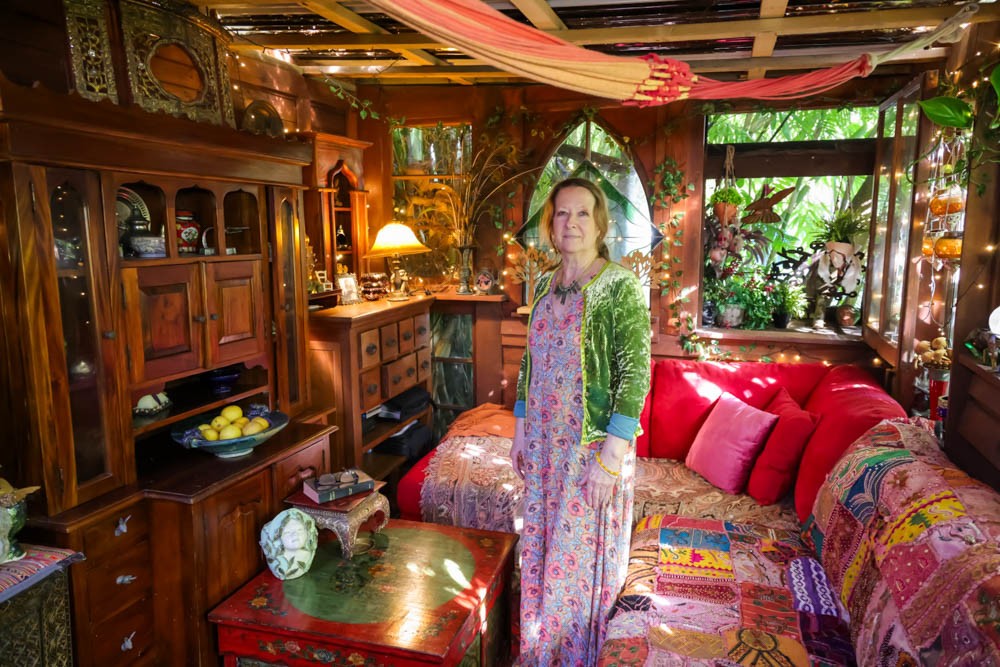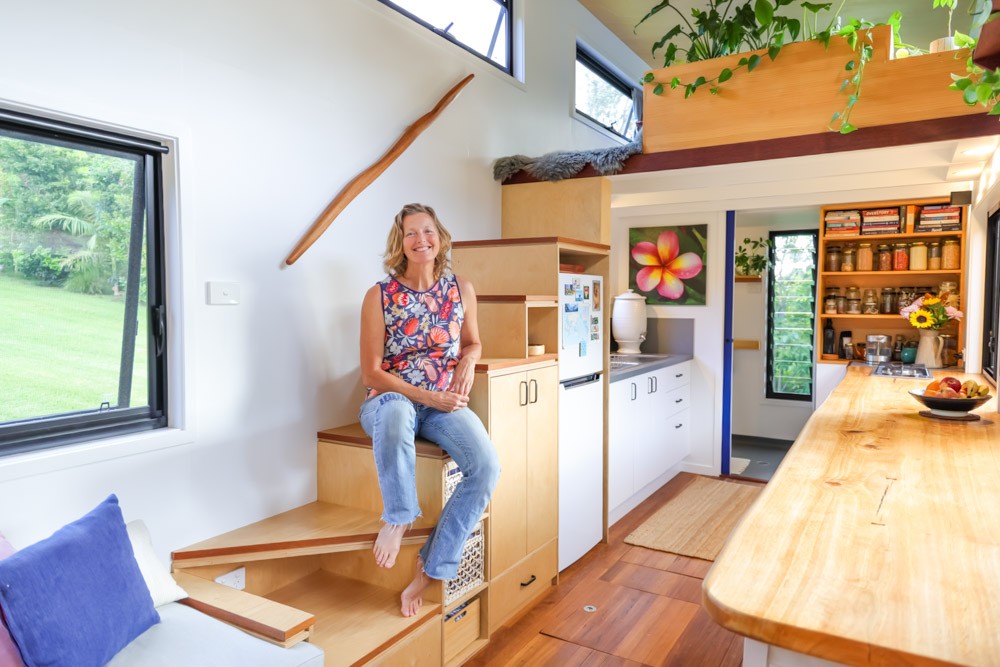Natural-Built Tiny House Incorporates Biophilic Design And A Living Roof
Biophilic design is a term which refers to the connection between our built environment and the living world around us. It speaks to our innate love of nature, our biosphere and connection with living systems. This tiny house has been designed to incorporate elements of biophilic design and natural building to construct a home which is beautiful, natural and healthy to live in, proving that a tiny house can truly be capable of having a big positive impact.
It was really exciting for me to visit this house and to speak with its owners, Walker and Heather. I’m extremely passionate about regenerative architecture and the ability for design to have a positive impact on the world around us. I truly believe that good design can help us solve many of the worlds problems and that through regenerative architecture, biophilic design and biomimicry, we can create living structures which are not only healthy for humans and help to improve our lives, but also improve and enhance the living world around us. It’s exciting to see this tiny house, which incorporates so many of these ideas.
In this video tour, Walker mentions the Living Building Challenge as a guiding principle for the home’s construction. The living building challenge suggests that a building should function like a flower, rooted in its place. It should restore a healthy relationship with nature, collect and treat water, be net energy positive relying on solar income, foster a healthy human environment both mentally and physically, use materials which are safe, support a just equitable world and also be beautiful and uplifting to the human spirit. Who could ask for more!
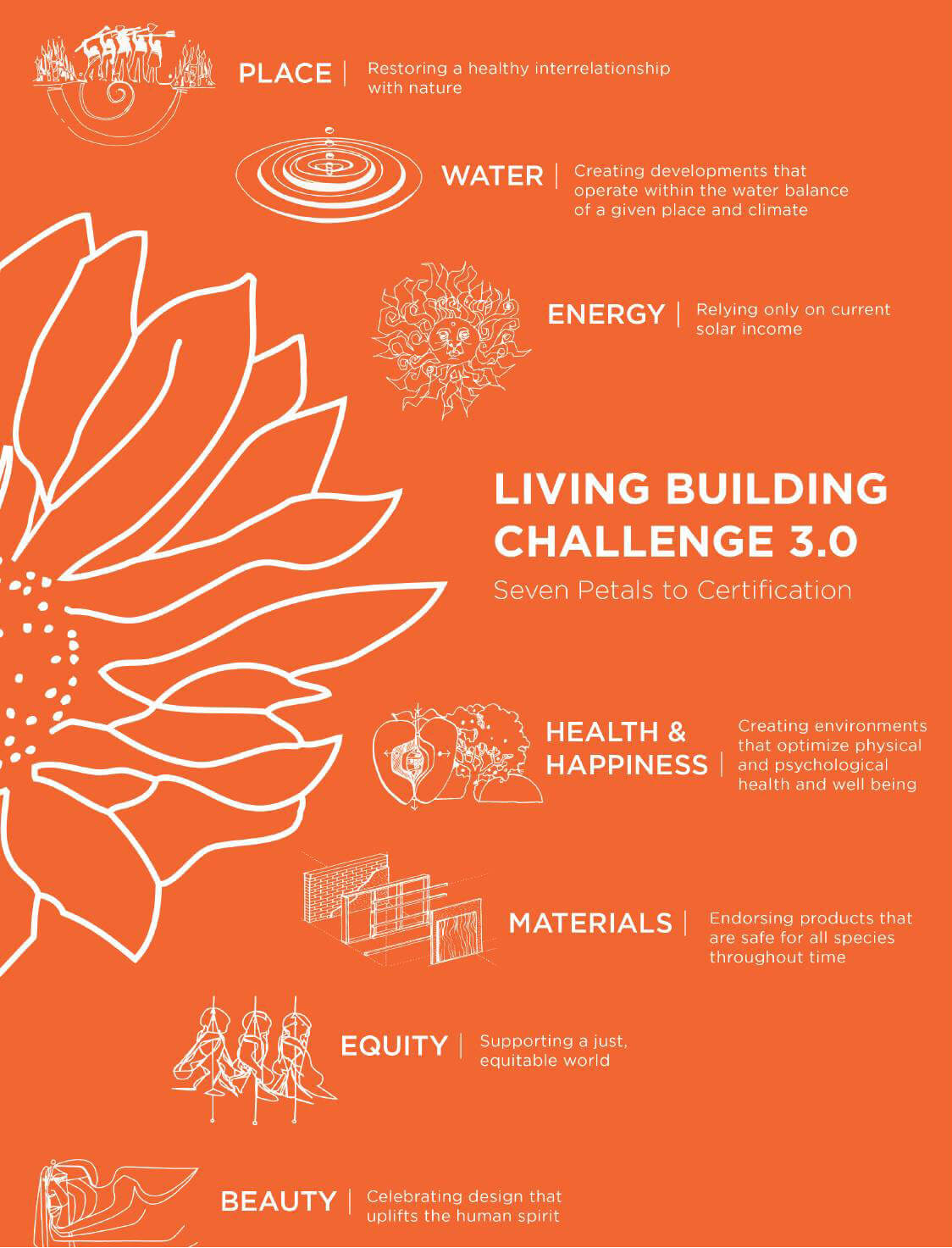
While these principles might seem ambitious, they are wonderful guidelines for us to aspire to, and it’s exciting to see so many of these ideas executed in this tiny house, from the use of salvaged materials, through to natural building elements such as the living roof.
A living roof is an especially ambitious element to include in a tiny house on wheels, and while it’s just been planted, it seems to be a successful experiment so far. It will be really interesting to revisit this home in the future and see how this feature turns out in the long term.
There are so many elements of this tiny home’s design to be excited about! Make sure you check out the full video tour (above). To find out more information about this home, you can visit the Tiny Living Building website, and also on the builders website, Tiny Healthy Homes.
.jpg)
.jpg)
.jpg)
.jpg)
.jpg)
.jpg)
